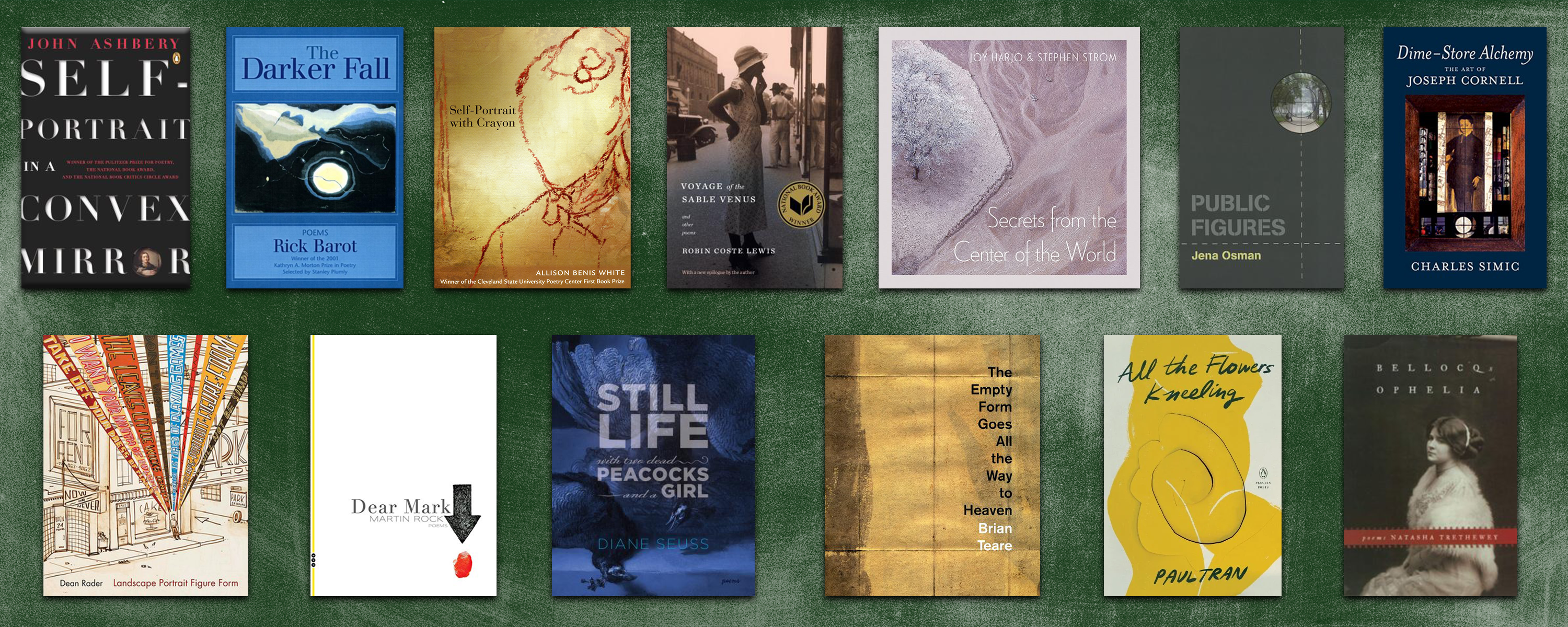“When writers write about painting, they are in a sense on vicarious holiday.”
–Geoff Dyer, Out of Sheer Rage
*Article continues after advertisement
When I was young, there were three forms of art that I engaged in: music (piano, percussion, and the moon guitar), visual art (specifically drawing and painting), and poetry. I don’t play music anymore. I also don’t draw or paint that much anymore, but one way in which I have remain engaged in the visual arts is through the writing of ekphrastic poetry. Through my poems, I’ve corresponded with the paintings of Edward Hopper and the sculpture of Eva Hesse; most recently, I just finished writing a book that engages with the visual art and writings of both Agnes Martin and On Kawara.
I love teaching ekphrastic poetry and ekphrastic-oriented collections because in my own experiences, the act of seeing the visual art of another has allowed my mind and imagination to be free. In the act of seeing, the mind of the poet can wander to unexpected places, rendering the writing new, stranger, and sometimes more surprising.
In the process of reading ekphrastic poems and books, it’s also interesting to think about the expansive ways in which poets engage with visual art. Some may write about the scene or subject being depicted in the artwork. Others might write in the voice of the person or object represented. Still others might write about their personal experiences while looking at the art. Other options include fictionalizing a scene within the art or writing about the work in the context of its socio-political history.
Many ekphrastic poems deploy some or all of the above, using the visual art as a way to engage in or enact social, historical, personal, philosophical, and political concerns. In essence, ekphrastic poems are a way to interact with the world and a way to respond to the world. The process of writing ekphrastic poetry also brings into question aspects of viewing, the culture of viewing, and the gaze, always asking the questions of who is looking at what, when, and why?
Sometimes it can be easier to write an ekphrastic poem than to stare at a blank page; thus ekphrastic poetry can be useful to overcoming writer’s block. To allow a piece of visual art to infiltrate one’s consciousness, and then create a poem to articulate that embodiment—oftentimes in new language or new perception—can be a powerful and mysterious process. In an ekphrastic correspondence, the poet not only embodies a piece of art but becomes an accessory to the process of making. Out of this process emerges a new way of seeing.
Course Description
In this course, we will focus on ekphrastic poetry—a poetic description and depiction of a work of visual art. In some ways, all poems are conversations with the world, but ekphrastic poems specifically focus on artwork. Throughout history, poets such as Homer, Virgil, John Keats, Robert Browning, Rainer Maria Rilke, Marianne Moore, W.H. Auden, William Carlos Williams, Elizabeth Bishop, Jorie Graham, John Ashbery, Charles Simic, Anne Carson, Paisley Rekdal, Robin Coste Lewis, Brian Teare, Terrance Hayes, and so many more have turned to visual art or other artforms as a kind of correspondence to amplify and expand upon their poems, and in some cases, to begin a poem.
We will read some individual ekphrastic poems to start, and then transition to full collections of poems that are either fully ekphrastic or contain many ekphrastic poems. While reading, we will consider how poets have encountered visual art and other art forms, and how they have re-casted their own seeing into new pieces of art.
Reading List
John Ashbery, Self-Portrait in a Convex Mirror • Rick Barot, The Darker Fall: Poems • Allison Benis White, Self-Portrait with Crayon • Robin Coste Lewis, Voyage of the Sable Venus: And Other Poems • Joy Harjo and Stephen E. Strom (photographer), Secrets from the Center of the World • Jena Osman, Public Figures • Dean Rader, Landscape Portrait Figure Form • Martin Rock, Dear Mark: Poems • Diane Seuss, Still Life with Two Dead Peacocks and a Girl: Poems • Charles Simic, Dime-Store Alchemy: The Art of Joseph Cornell • Brian Teare, The Empty Form Goes All the Way to Heaven • Paul Tran, All the Flowers Kneeling • Natasha Trethewey, Bellocq’s Ophelia




